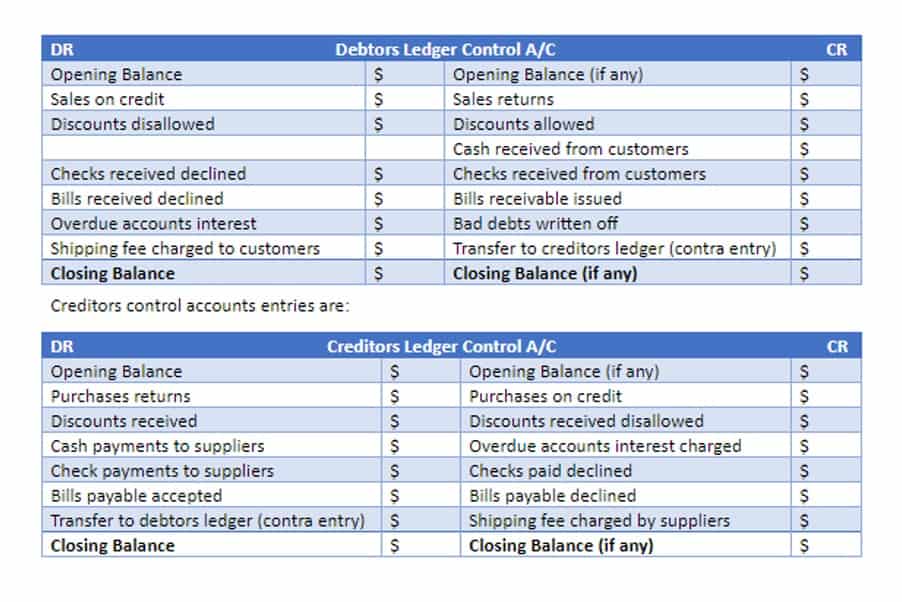Содержание
Your organization must have collected heaps of data prior to implementation of ERP. All of this data has to be fed into the system but in a certain format. For this, you may need to tweak and rearrange your data and prime it for migration into the new software. Sensitize your organization about the possible system downtimes and ERP Development other snags that may occur once the implementation begins. First up, you’re going to need a team of highly efficient go-getters who will stop at nothing to implement the system within the stipulated time. Once you’ve rounded up your best, you must empower them with the necessary tools and resources to make their jobs simpler.
That capability is made possible, again, through an intelligent data core. Or in other words, companies can plan, execute, and analyze multiple scenarios from different angles as fast as the world changes. That is helping us make better decisions in the business and deliver an even better, more consistent experience to our customers.
All communication channels, including telephone, email, chat, and video calls, are covered under a central dashboard. The end goal of deploying any software across an organization is to improve its efficiency. ERP systems have been known to deliver just this, along with so much more.
What is ERP II? For more information kindly visit : https://t.co/t1xB9pF8PK
— BestERPsolutions (@BestERPSolution) April 8, 2022
Poorly integrated software means you can’t make the most out of an ERP. The software requires a great deal of time to set up, as well as to convert a company’s existing data into it. Also, because ERP systems can only be configured in a limited number of ways, most companies will find that they must alter their operating procedures to fit the software, rather than altering the software to fit their procedures. These changes call for a large training expenditure, and may result in resistance from those employees accustomed to the old system.
Video: What Is Erp?
Data is useful only if companies can analyze and understand it, and an ERP helps with that. Leading solutions have impressive reporting and analytics tools that allow users to not only track KPIs, but display any metrics or comparisons they can dream up. Since an ERP is all-encompassing, it can help a business understand how a change or problem with a process in one department affects the rest of the company.
It is a software that unifies a company by storing all of its data in one place. Depending on the seniority of an individual, they can access this information fully or in part, with the help of a sophisticated dashboard and can generate reports from it. The concept of ERP may just be only a few decades old but the idea behind it originated way back in the 1940’s and 50’s with the invention of MRP orMaterial requirements planning. With the help of MRP, companies fed the details from the bill of materials for a particular product into a mainframe computer and used the information to send out purchase orders for raw materials. ERP systems compile all the information in systematic formats and store it on a centralized database.
What Does Erp Stand For & What Are Its Primary Business Benefits?
Once the business case is complete, the executive sponsor presents the business case to the appropriate group of senior executives for formal approval to spend money and direct staff to implement the ERP. On the other hand, the team’s responsibility involves setting top-level goals, needs, KPIs , directing daily project activities, making complete surety on the project completion date and budget, and measuring results. However, the process isn’t full-proof and at times is prone to errors that result in a partial or a complete failure in implementing ERP. Removes the silos between various departments and truly integrates your SCM with the rest of the organization. CRMs use the Software-as-a-Service model, while the ERP solutions may use either SaaS or hybrid architecture as the legacy solutions phase-out.
What is the ROI potential for eresource ERP system? For more information https://t.co/haRbbYhaKT
— BestERPsolutions (@BestERPSolution) April 7, 2022
Enterprise resource planning systems come with customer relationship management applications with financials, sales, and front-office functions. The function of CRM in ERP is an essential part of staying competitive in your business area. The crucial thing that helps in the survival of your business is retaining customers, which offers huge profits. Thebest CRMapp in your ERP system results in better communication with your customers and enhancing relationships faster, accurate access to all customers’ information and history. Start with the modules foundational to your business and build from there.
Your ERP software is designed to comply with your industry’s best practices to integrate your processes and quickly increase workplace efficiency. ERP system supports accounting departments from cost management to accounts payable. The last thing you want is a technology provider with outdated tools when you need innovative solutions for growth. ERP systems are often designed for a specific industry or business process and only have limited functionality.
This will allow your company to improve things like your warehouse management process flow. An ERP can cover a variety of functions in a business and how you use an ERP system depends on the variety of systems that you need to connect and what departments are involved. With an integrated ERP system, companies find that their transaction error rates decline, while many tasks that formerly required manual effort are now entirely automated. Also, subject to security issues, employees can access information in other departments that was previously difficult to obtain, or only with the help of special programming by the IT department. Regardless of what industry you’re in, Infor is ready to provide adaptable and comprehensive ERP solutions that drive business results.
Previous Postpodcast: Ecommerce In The Time Of Covid
Furthermore, ERP systems support all aspects of financial management, human resources, supply chain management, and manufacturing with your core accounting function. Enterprise resource planning is a system of integrated software applications that standardizes, streamlines and integrates business processes across finance, human resources, procurement, distribution, and other departments. Typically, ERP systems operate on an integrated software platform using common data definitions operating on a single database. In addition to finance, ERP includes modules for different lines of business, such as supply chain and HR, and integrates everything together in a single system. Enterprise resource planning systems include a variety of different modules.
Under the provided data set, like the enormous data sets found in an ERP, the patterns and correlations present are not visible to the human eye. With artificial intelligence, small and midsize businesses can know the trends and then make proper inferences regarding the particular operations that permit correct forecasting and apprised decision-making. With the use of AI-enabled ERP systems, you can expedite the adoption of chatbots for responding to all of the customers’ queries and comments.

As with other initiatives, companies can avoid major challenges by taking the time to create a detailed implementation plan. Executives are generally focused on outcomes — using information to achieve objectives, like increasing efficiency, reducing costs and responding to changing consumer needs or market conditions. An ERP system doesn’t always eliminate inefficiencies within the business. The company needs to rethink the way it’s organized, or else it will end up with incompatible technology.
Find out how to identify legacy systems and migrate them to a modern solution. In some instances, organizations may choose a hybrid solution, in which they use an ERP and integrate it with other standalone apps. When drawing BI data from multiple sources, there is always an overhead. Either BI analysts are working with old data, or they’re expending resources on integrating all data. Precise Business Solutions has helped us to uncover the right tools and techniques to tweak the system to work for us. We might have the ideas and the passion behind it, but you’ve got to have someone helping you to get there who both understands the software and is willing to understand your business.
The ERP software can streamline business processes and make the whole data collection work efficient and more manageable for every department. The modules are purchased as per the organizational needs and business models to streamline all processes through automation in data entry, computation, analytics, and generating preemptive insights. For many businesses, ERP is the primary application required to accurately collect, bill, and report all financial transactions.
Small Business Erp
But then if you look across doing this whole concept of ERP as a philosophy, not as a software solution, but as a philosophy and that’s, baked into ERP Advisers Group’s methodology. As we look across the entire business to say, where can software be plugged in here? To give you the ability to really understand what’s happening in all these different facets of your organization, where you didn’t before, without that you’re kind of flying blind.
This resource-oriented objective of ERP reflects its origin as a tool for the manufacturing industry. Over several decades, commercial ERP vendors have added capabilities https://globalcloudteam.com/ that prove useful in many other industries as well. Leverage in-context and enterprise-level insights to enable quick, data-driven decision making.
ERP also integrates with front-office applications to build holistic views of customers, including customer relationship management solutions. Additionally, cloud-based ERP applications are often embedded with next-generation technologies, such as the internet of things , blockchain, AI, machine learning, and digital assistants. These advanced technologies deliver data and capabilities that not only enhance many traditional ERP functions; they create new opportunities for increased efficiencies, new services, and deeper insight across an enterprise. Since ERP systems are comprehensive across an enterprise, their management often involves a partnership with the CFO as well as the CIO, COO, and other key executive leaders. A complete ERP suite also includes enterprise performance management, software that helps plan, budget, predict, and report on an organization’s financial results.
Human Resources Management
In a nutshell, the main difference between these two is the scope – an ERP usually covers the functionalities of CRM & many others, while CRM focuses purely on the relationship management with your customers. Although enterprises havecustomized ERPs for years, it remains a bad practice. Customization increases implementation cost significantly as users demand additional features. It voids the warranty; problems reported to the vendor must be reproduced on unmodified software. It makes upgrades difficult; the custom code usually requires changes every time the vendor issues a new release.

Cloud-based systems follow a subscription fee model, so the ongoing costs are predictable and focused on using the service, not on maintenance or upgrades. Instead, companies must uplift and re-shift their systems and processes to align with achieving business goals in the digital age. That takes having a system with a backbone, as in a digital backbone, with an intelligent data core. Additionally, there is some overlap between ERP and SCM solutions, with many features and functions available in both.
How To Get The Best Deal On Your Erp Selection
CommunityNew A collaborative space where you can drive discussions with industry experts, post your queries and explore solutions for all your answers. Contact We are here to help deliver delight to Retailers, Restaurants & Distributors with simple & complete automation solutions. SQL Server databases can be moved to the Azure cloud in several different ways.
Following these recommendations and best practices will make the entire implementation process go a lot more smoothly. They will also help you get the buy-in you need from your employees in order to hit the goals and KPIs you want to be working toward once the system is in place. Learn more about the benefits of cloud ERP by reading the ten reasons business leaders choose cloud ERP from Epicor. Epicor delivers ERP in the cloud, on-premises, and as a mobile solution—whatever works best for your business.
- A software of such great importance across the company can not be implemented without keeping all the stakeholders constantly.
- Here’s what you need to know if you’re selecting a new ERP, first thing is.
- As we look across the entire business to say, where can software be plugged in here?
- Since the processes in the example above occur within a few seconds of order receipt, problems are identified quickly, giving the seller more time to correct the situation.
The entire process is monitored, and necessary adjustments are made to keep the production and dispatch on track with the help of inputs generated by the ERP system. This data may also be made available to the sales team if required by the business model. Historically, ERP has been almost exclusively adopted by medium and large sized companies. In recent years, this trend has rapidly changed, thanks to cloud based ERPs that can scale up and down rapidly depending on the requirements. The relentless pace of change is exposing weaknesses in static business models and driving every organization to continuously blend revenue streams from products, subscriptions, and a wide variety of services.
Intuitive user experience based on the customer’s feedback obtained. However, the majority of enterprises may already have an on-premise system that they have been using for years. Faster implementation, lower upfront capital expenditure as well as the mobility and accessibility features. Mobile application, an essential feature to improve collaboration across departments. Poor consultant effectiveness, neglecting the company’s current culture, and misalignment with top-level management.
Data Security:
Hence, the costs for implementing ERP across a small business differs from that of implementing ERP in much larger organizations. This module covers purchase, inward shipping, along with allaccountingand compliance functions. This module aids in eliminating errors caused due to inaccurate data and proves to be extremely useful for organizations operating from more than one location. They can process payroll, reimbursements and manage benefits administration from their central facility. As more and more companies started adopting this technology, MRP evolved into MRP II or manufacturing resource planning. MRP II was the precursor for the ERP that we use today, as it aimed to use the computer technology to connect various arms of an organization to one another and form a business enterprise.














